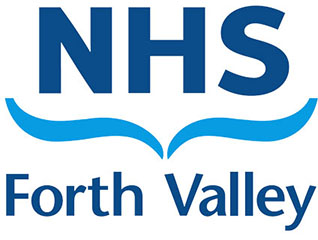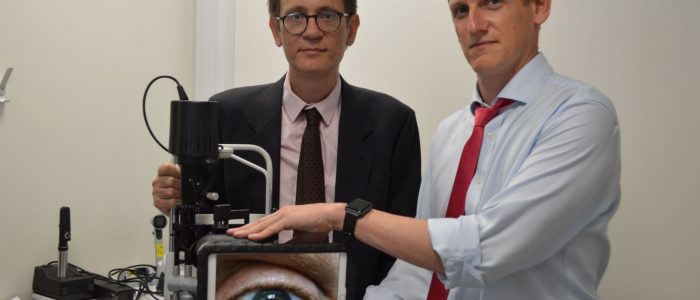Pioneering Virtual Eye Project Extended To Help Respond to Covid-19
A pioneering virtual emergency consultation programme for eye patients has been extended to potentially cover the whole of Scotland in response to the COVID-19 emergency.
A network of optometrists is being enlisted to attend to urgent eye problems, meaning that only cases which need secondary care are directed to hospitals themselves.
Emergency Eyecare Treatment Centres have already been set up in NHS Grampian and NHS Forth Valley, with more Boards expected to follow.
The initiative is part of The National Eye Health Framework document, ‘Saving Sight, Saving Lives’, distributed on behalf of EyeHealth Scotland – a group made up of NHS Ophthalmology clinical leads, which also has representation from optometric advisors, hospital optometrists, nursing and managerial staff, Optometry Scotland and the Royal National Institute of Blind People Scotland.
A teleophthalmology system developed in collaboration by the University of Strathclyde, NHS Grampian and NHS Forth Valley will connect specialists using a telemedicine platform used by NHS Scotland.
The original NHS Forth Valley system was funded by the Scottish Government within the Technology Enabled Care programme, and will allow vital hospital resources to be freed up.
Teleophthalmology is a branch of telemedicine that delivers eye care through digital medical equipment and allows clinicians to provide quality healthcare outside of clinics, providing consultant opinions in community optician practices.
A live video feed will securely connect doctors, opticians and patients and anyone who goes to an emergency optometrist with a serious eye problem can be seen by a specialist straight away and immediately diagnosed and treated.
Dr Mario Giardini from the University of Strathclyde’s Department of Biomedical Engineering, who developed the system in collaboration with NHS consultant and Strathclyde honorary lecturer Dr Iain Livingstone, said: “The system has allowed a new way of working and will go from a number of selected pilots within hospital A&E departments to optometrists throughout the country. It’s not automatic that every NHS Board will take part and is a decision for every individual Board to make.
“Selected optometrists will have devices attached to their equipment so they can connect to a specialist who will decide what cases need to come into hospital when there is an immediate threat to sight or life.
“Strathclyde is working in an advisory role on the hardware side of the project. We have identified devices that can be used to link the optometry instruments to the NHS Attend Anywhere network.”
The technology uses a slit lamp microscope, which emits an intense beam of light to examine the eye, along with a tablet computer transmitting a live video feed. This enables a consultant to view the magnified eye remotely. It also uses adapters based on Strathclyde technology to see the back of the eye.
An audio feed is also transmitted through the tablet computer, transforming the microscope into a ‘talking slit lamp’. Through it, the consultant can speak with the treating optometrist and with the patient.
The trial, which started in April 2018, became part of usual practice in the Emergency Departments at Forth Valley Royal Hospital in Larbert and in the Minor Injuries Unit at the Stirling Health and Care Village.
Project Lead and NHS Forth Valley Consultant Ophthalmologist, Dr Livingstone, said: “COVID-19 has completely disrupted traditional eye care and it is now critical to avoid unnecessary hospital visits, reduce crowded clinics, and treat patients in their own home. Modern mobile technology enables this.
“We are progressing the teleophthalmology programme across Scotland, and have 12 activated teleoptometry practices so far, re-centring acute eye care to optometric practices.
“We are delighted to have just activated our most rural site in Shetland.
“The teleophthalmology system means an eye specialist is able to review patients at the moment advice is needed, offering decision support to the high street optician, and ensuring any follow up treatment is more streamlined.
“Personally, I think this is the most important development in modern eye care, catalysed by the present crisis.”
Prescriptions can also be issued directly from the optometrist, with the range of conditions dramatically extended, again saving patients having to visit a specialist clinic, minimising travel, crowding of clinic, and potential for contraction of COVID-19.
John Olson, Clinical Lead at NHS Grampian Eye Health Network, said: “During the COVID-19 pandemic a new way of working is required that will involve joined-up working between primary and secondary care colleagues. The emphasis needs to be on preventing patients from needing a face-to-face consultation if at all possible
“Emergency Eyecare Treatment Centres have already been activated in NHS Grampian and NHS Forth Valley.
“These units are staffed by optometrists, provided with teleophthalmology tools, such as a digital relay comprising of a video link of microscopic view of the eye to be cascaded to an eye doctor at another location, enabling live decision support at the moment it is needed, expanding the range of treatments previously possible in primary care.”



